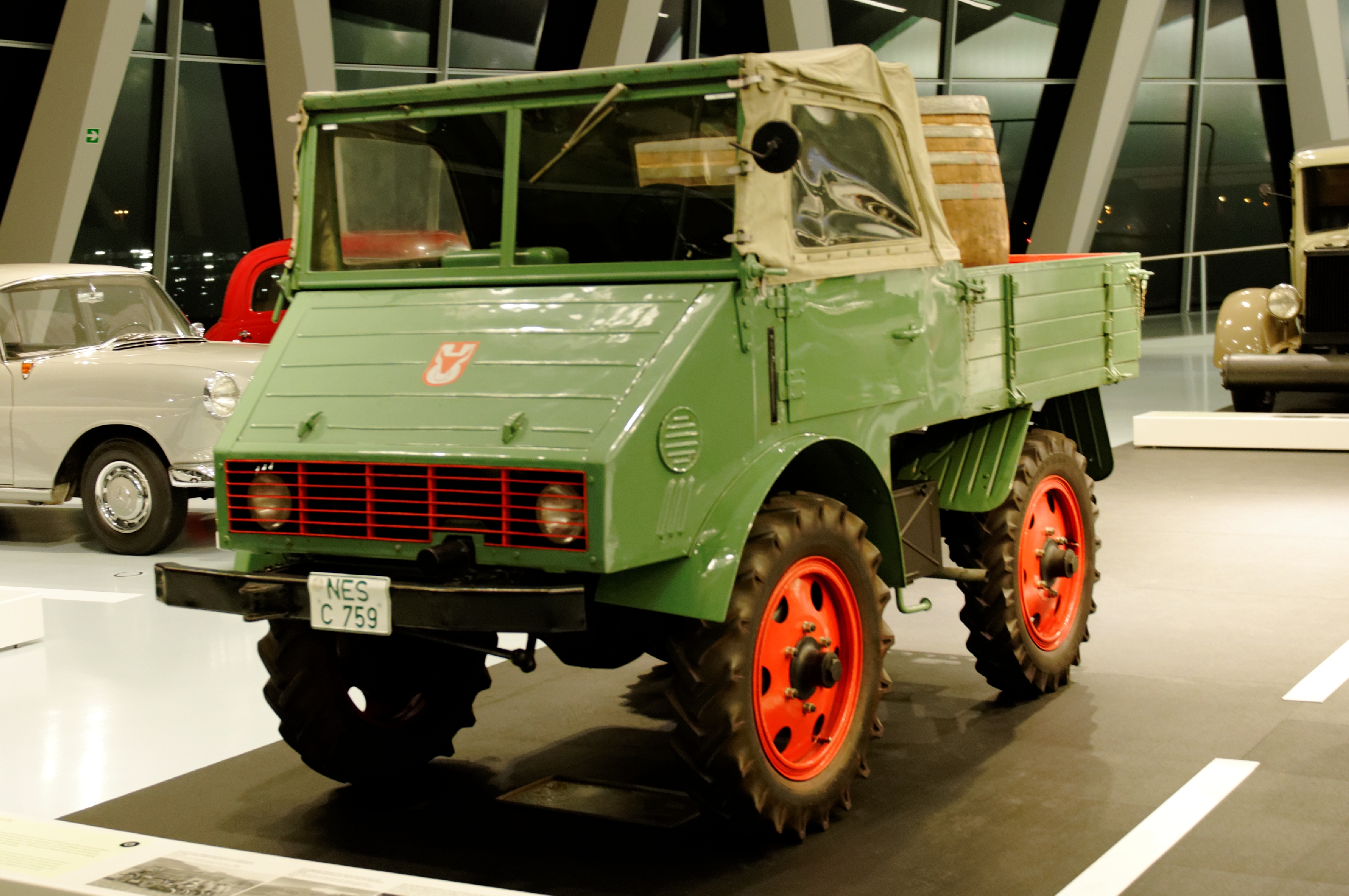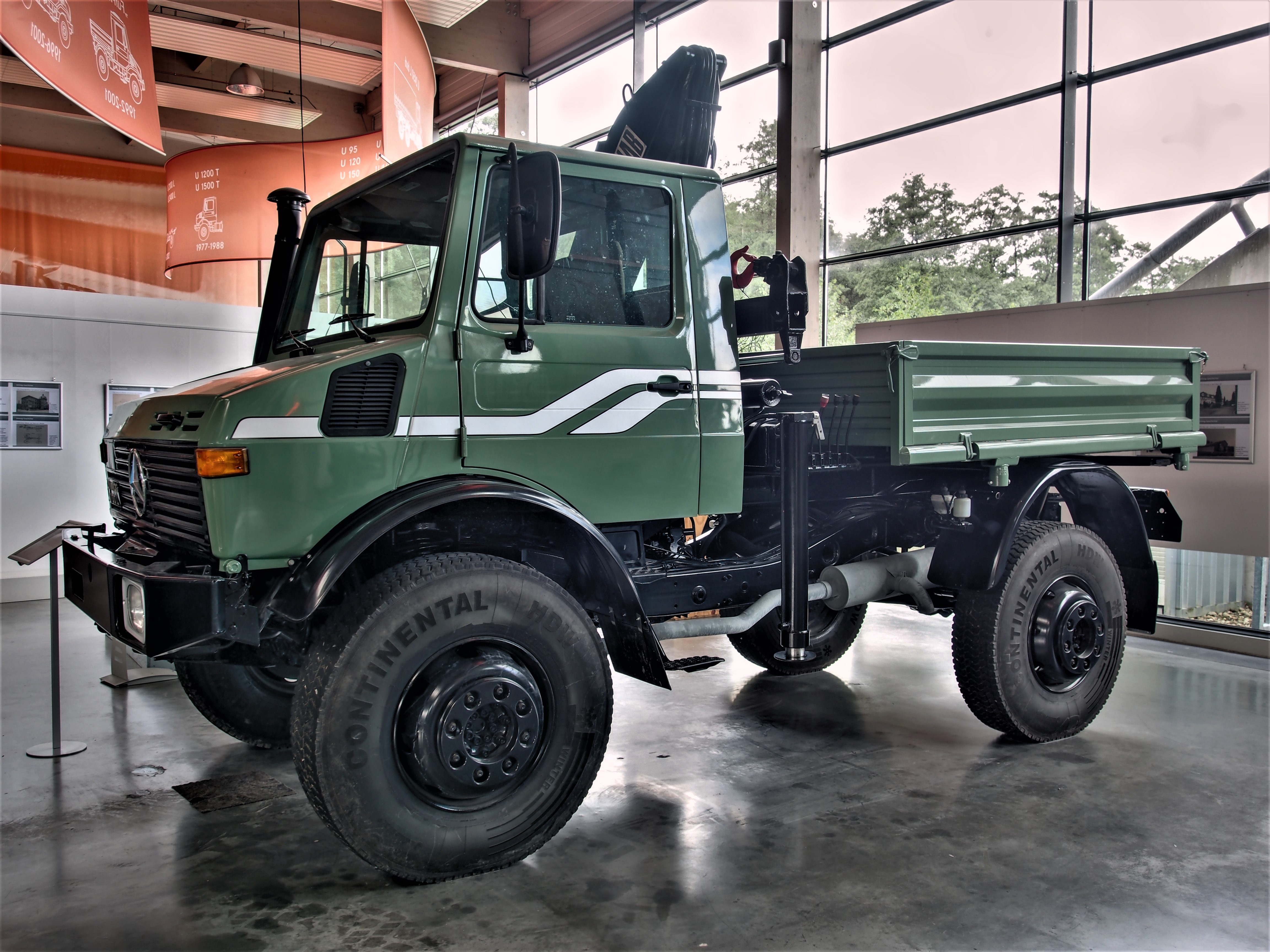|
Mercedes-Benz OM352 Engine
The Mercedes-Benz OM 352 is a 5.7 litre inline-6 cylinder 4-stroke Diesel engine, made by Daimler-Benz. Development It is one of many models in the 300 series of engines, which were developed during and after World War II, while specifically the OM352 was revealed in 1964. The OM352's lineage can be traced back to the OM311, itself an inline-six engine. The OM352 has many applications, including marine, military, municipal, and agricultural vehicles, as well as stationary settings. The engine has differing trim and power levels, affording designations such as OM 352A a variant fitted with a turbocharger, or the OM352 LA, which is fitted with an intercooler and a turbocharger. (List of Mercedes-Benz engines.) The engine is water-cooled, and is produced using cast-iron cylinder block, with cast-in cylinders. The engine utilizes diesel fuel delivered in a direct injection method from a Bosch PES style inline injection pump. The cylinder head is a single unit for all cylinders, and ... [...More Info...] [...Related Items...] OR: [Wikipedia] [Google] [Baidu] |
Unimog
The Unimog (, ) is a range of multi-purpose tractors, trucks and lorries that has been produced by Boehringer from 1948 until 1951, and by Daimler Truck (formerly Daimler-Benz, DaimlerChrysler and Daimler AG) since 1951. In the United States and Canada, the Unimog was sold as the Freightliner Unimog. Unimog production started in 1948 at in Göppingen. Daimler-Benz took over manufacture of the Unimog in 1951, and first produced it in their Gaggenau plant. From 1951, the Unimog was sold under the Mercedes-Benz brand. However, the first Unimog to feature the three-pointed Mercedes-Benz star was only introduced in 1953. Since 2002, the Unimog has been built in the Mercedes-Benz truck plant in Wörth am Rhein in Germany. The Mercedes-Benz Türk A.Ş. plant assembles Unimogs in Aksaray, Turkey. Unimogs were also built in Argentina (first ever country to do so outside Germany) by Mercedes-Benz Argentina S.A. under licence from 1968 until 1983 (with some extra units built until 1991 o ... [...More Info...] [...Related Items...] OR: [Wikipedia] [Google] [Baidu] |
Connecting Rod
A connecting rod, also called a 'con rod', is the part of a piston engine which connects the piston to the crankshaft. Together with the crank, the connecting rod converts the reciprocating motion of the piston into the rotation of the crankshaft. The connecting rod is required to transmit the compressive and tensile forces from the piston. In its most common form, in an internal combustion engine, it allows pivoting on the piston end and rotation on the shaft end. The predecessor to the connecting rod is a mechanic linkage used by water mills to convert rotating motion of the water wheel into reciprocating motion. The most common usage of connecting rods is in internal combustion engines or on steam engines. __TOC__ Origins The predecessor to the connecting length is the mechanical linkage used by Roman-era watermills. The earliest known example of this linkage has been found at the late 3rd century Hierapolis sawmill in Roman Asia (modern Turkey) and the 6th century ... [...More Info...] [...Related Items...] OR: [Wikipedia] [Google] [Baidu] |
Mercedes-Benz Engines
Mercedes-Benz (), commonly referred to as Mercedes and sometimes as Benz, is a German luxury and commercial vehicle automotive brand established in 1926. Mercedes-Benz AG (a Mercedes-Benz Group subsidiary established in 2019) is headquartered in Stuttgart, Baden-Württemberg, Germany. Mercedes-Benz AG produces consumer luxury vehicles and commercial vehicles badged as Mercedes-Benz. From November 2019 onwards, Mercedes-Benz-badged heavy commercial vehicles (trucks and buses) are managed by Daimler Truck, a former part of the Mercedes-Benz Group turned into an independent company in late 2021. In 2018, Mercedes-Benz was the largest brand of premium vehicles in the world, having sold 2.31 million passenger cars. The brand's origins lie in Daimler-Motoren-Gesellschaft's 1901 Mercedes and Carl Benz's 1886 Benz Patent-Motorwagen, which is widely regarded as the first internal combustion engine in a self-propelled automobile. The slogan for the brand is "the best or nothing". Hi ... [...More Info...] [...Related Items...] OR: [Wikipedia] [Google] [Baidu] |
Mercedes-Benz L 1113
Mercedes-Benz (), commonly referred to as Mercedes and sometimes as Benz, is a German luxury and commercial vehicle automotive brand established in 1926. Mercedes-Benz AG (a Mercedes-Benz Group subsidiary established in 2019) is headquartered in Stuttgart, Baden-Württemberg, Germany. Mercedes-Benz AG produces consumer luxury vehicles and commercial vehicles badged as Mercedes-Benz. From November 2019 onwards, Mercedes-Benz-badged heavy commercial vehicles (trucks and buses) are managed by Daimler Truck, a former part of the Mercedes-Benz Group turned into an independent company in late 2021. In 2018, Mercedes-Benz was the largest brand of premium vehicles in the world, having sold 2.31 million passenger cars. The brand's origins lie in Daimler-Motoren-Gesellschaft's 1901 Mercedes and Carl Benz's 1886 Benz Patent-Motorwagen, which is widely regarded as the first internal combustion engine in a self-propelled automobile. The slogan for the brand is "the best or nothing". Hi ... [...More Info...] [...Related Items...] OR: [Wikipedia] [Google] [Baidu] |
Unimog U 1300 L
The Unimog (, ) is a range of multi-purpose tractors, trucks and lorries that has been produced by Boehringer from 1948 until 1951, and by Daimler Truck (formerly Daimler-Benz, DaimlerChrysler and Daimler AG) since 1951. In the United States and Canada, the Unimog was sold as the Freightliner Unimog. Unimog production started in 1948 at in Göppingen. Daimler-Benz took over manufacture of the Unimog in 1951, and first produced it in their Gaggenau plant. From 1951, the Unimog was sold under the Mercedes-Benz brand. However, the first Unimog to feature the three-pointed Mercedes-Benz star was only introduced in 1953. Since 2002, the Unimog has been built in the Mercedes-Benz truck plant in Wörth am Rhein in Germany. The Mercedes-Benz Türk A.Ş. plant assembles Unimogs in Aksaray, Turkey. Unimogs were also built in Argentina (first ever country to do so outside Germany) by Mercedes-Benz Argentina S.A. under licence from 1968 until 1983 (with some extra units built until 1991 off ... [...More Info...] [...Related Items...] OR: [Wikipedia] [Google] [Baidu] |
Unimog 435
The Unimog 435 is a vehicle of the Unimog-series by Mercedes-Benz. 30,726 vehicles were produced from 1975 to 1993 in eight different variants in the Mercedes-Benz Unimog-plant in Gaggenau. The vehicles were sold as ''Unimog U 1300 L'' and ''Unimog U 1700 L''. Best selling vehicle was the ''U 1300 L'', which was built as a special vehicle for the Bundeswehr and the German fire department often. The successor Unimog 437 with a similar appearance is still in production. The Unimog 436 is based on the Unimog 435. It is made for export and has a different cab. The names of Unimog-vehicles may create confusion, the ''U 1300'' belongs to the Unimog 425-series, while the ''U 1300 L'' belongs to the Unimog 435-series. Description The Unimog 435 belongs to the heavy duty Unimog series which started with the Unimog 425. Compared with the Unimog 425, the 435 has a longer wheelbase and more powerful engines. Just as the 425, it has ... [...More Info...] [...Related Items...] OR: [Wikipedia] [Google] [Baidu] |
Unimog 406
The Unimog 406 is a vehicle of the Unimog-series by Mercedes-Benz. A total of 37,069 units were manufactured by the Daimler-Benz AG in the Unimog plant in Gaggenau from 1963 to 1989. The 406 was the first medium duty Unimog, having a larger wheelbase of 2380 mm and more than twice the engine power of the Unimog 401. Unlike the initial Unimog, the 406 does not have a car engine but a heavy duty truck engine instead. Several following Unimog versions were based on the 406. There were elevenVogler, p. 57 different ''types'' made of the Unimog 406, which were available in four ''models'' (U 65 – U 84) with a closed two-door or four-door cab, as ''Cabrio'' and as an OEM part (a "half" Unimog lacking the rear part, as a basis for third party vehicle manufacturers). During its long production period, the 406 received several technical refinements. In 1964, the precombustion chamber diesel engine OM 312 was replaced with the direct injected OM 352. Disc brakes followed in 1973. F ... [...More Info...] [...Related Items...] OR: [Wikipedia] [Google] [Baidu] |
Mercedes-Benz OM366 Engine
The Mercedes-Benz OM366 is a 6.0 liter (5,958cc) Straight-6 (I6) Overhead Valve (OHV) diesel engine with 2 valves per cylinder. It is related to the Straight-4 OM364 engine which has two cylinders chopped off, while the bore and stroke remain unchanged. It launched in 1983 and had a direct injection system (inline fuel pump) to deliver fuel to every cylinder. It used a twin-scroll turbocharger that was giving ~0.6-0.8atm of boost. See also *List of Mercedes-Benz engines Mercedes-Benz has produced a range of petrol, diesel, and natural gas engines. This is a list of all internal combustion engine models manufactured. Petrol engines Straight-three * M160, 0.6 – 0.7 L (1998–2007) * M281, 0.9 - 1.0 L (20 ... References OM366 {{Automotive-part-stub ... [...More Info...] [...Related Items...] OR: [Wikipedia] [Google] [Baidu] |
Mercedes-Benz OM364 Engine
The Mercedes-Benz OM364 is a 4.0 liter (3,972cc) Inline-four engine (I4) Overhead valve (OHV) diesel engine with 2 valves per cylinder. It is related to the Straight-six engine OM366 engine which has two extra cylinders, while the bore and stroke remain unchanged. It launched in 1983 and was first utilized in the Mercedes-Benz LK followed by the second generation Mercedes-Benz T2. Other applications include the MB-trac, the Mercedes-Benz MB800 and industrial engines. MTU Friedrichshafen sold the engine under the ??? label. The engine had a Direct injection system (inline fuel pump) to deliver fuel to every cylinder. Naturally aspirated and turbocharged versions with and without intercooler existed. Only the turbocharged and intercooled version became EURO II capable from 1994 onwards. A twin-scroll turbocharger was utilized giving ~0.9-1atm of boost. {, class="wikitable" , +Engine Details !Power: , 63-103 kW (86-140 hp) @ 2,600-2,800 rpm !Height: , - , - !Torque: , 254-500 ... [...More Info...] [...Related Items...] OR: [Wikipedia] [Google] [Baidu] |
Tata Motors
Tata Motors Limited is an Indian multinational automotive manufacturing company, headquartered in Mumbai, India, which is part of the Tata Group. The company produces passenger cars, trucks, vans, coaches, buses. Formerly known as Tata Engineering and Locomotive Company (TELCO), the company was founded in 1945 as a manufacturer of locomotives. The company manufactured its first commercial vehicle in 1954 in a collaboration with Daimler-Benz AG, which ended in 1969. Tata Motors entered the passenger vehicle market in 1988 with the launch of the TataMobile followed by the Tata Sierra in 1991, becoming the first Indian manufacturer to achieve the capability of developing a competitive indigenous automobile. In 1998, Tata launched the first fully indigenous Indian passenger car, the Indica, and in 2008 launched the Tata Nano, the world's most affordable car. Tata Motors acquired the South Korean truck manufacturer Daewoo Commercial Vehicles Company in 2004. Tata Motors has b ... [...More Info...] [...Related Items...] OR: [Wikipedia] [Google] [Baidu] |
South Africa
South Africa, officially the Republic of South Africa (RSA), is the southernmost country in Africa. It is bounded to the south by of coastline that stretch along the South Atlantic and Indian Oceans; to the north by the neighbouring countries of Namibia, Botswana, and Zimbabwe; and to the east and northeast by Mozambique and Eswatini. It also completely enclaves the country Lesotho. It is the southernmost country on the mainland of the Old World, and the second-most populous country located entirely south of the equator, after Tanzania. South Africa is a biodiversity hotspot, with unique biomes, plant and animal life. With over 60 million people, the country is the world's 24th-most populous nation and covers an area of . South Africa has three capital cities, with the executive, judicial and legislative branches of government based in Pretoria, Bloemfontein, and Cape Town respectively. The largest city is Johannesburg. About 80% of the population are Black South Afri ... [...More Info...] [...Related Items...] OR: [Wikipedia] [Google] [Baidu] |







.jpg)
